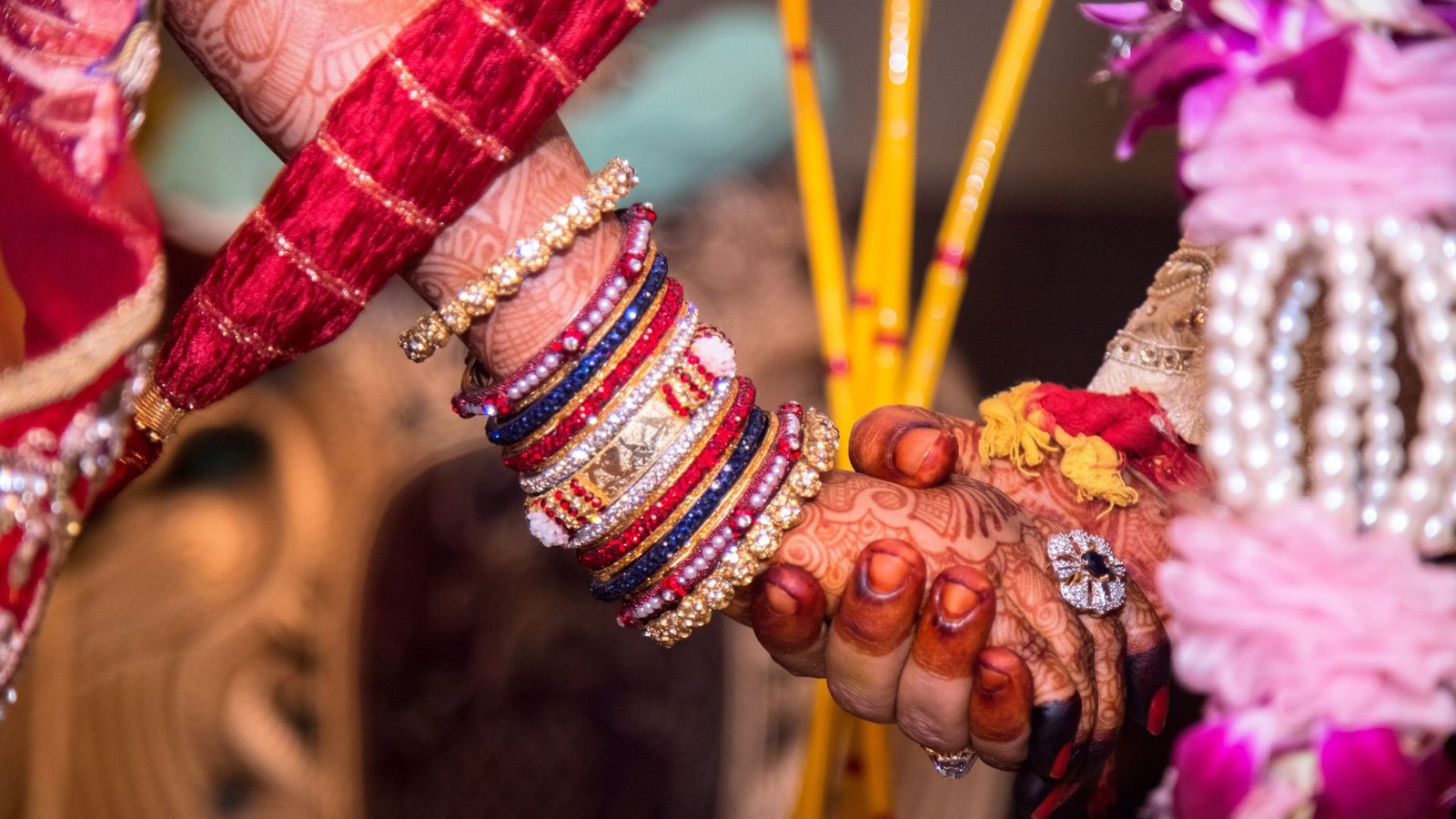On this page you will read detailed information about The Hindu Marriage Act 1955.
The Hindu Marriage Act 1955 is a crucial piece of legislation that governs the institution of marriage among Hindus in India. The act was enacted on May 18, 1955, with the purpose of amending and codifying the law related to marriage among Hindus. It falls under the jurisdiction of the Ministry of Law and Justice, specifically the Legislative Department.
Overview of the Hindu Marriage Act 1955

The Hindu Marriage Act, 1955, is an extensive and comprehensive legal framework that addresses various aspects of Hindu marriages. It applies to individuals who are Hindus by religion, including different Hindu denominations such as Virashaiva, Lingayat, and followers of Brahmo, Prarthana, or Arya Samaj. Additionally, it extends its provisions to Buddhists, Jains, and Sikhs. The act also covers individuals domiciled in India. Vide notification No. S.O.3912 (E), dated 30th October, 2019, this act is made applicable to the Union Territory of Jammu & Kashmir and the Union territory of Ladakh.
Definitions under the Act
To understand the provisions of the Hindu Marriage Act 1955, it is important to familiarize oneself with the definitions mentioned in the act. Some key definitions include:
- Custom and Usage: The expressions “custom” and “usage” refer to any rule that has been continuously and uniformly observed for a long time and has obtained the force of law among Hindus in a specific local area, tribe, community, group, or family. However, the rule should be certain, reasonable, and not opposed to public policy.
Note: The Hindu Marriage Act recognizes the importance of customs and usages in Hindu marriages, allowing for flexibility and diversity in matrimonial practices.
- District Court: The term “district court” refers to the competent court having jurisdiction over matters related to the Hindu Marriage Act in a specific area. In areas with a city civil court, the city civil court would act as the district court. In other areas, the principal civil court of original jurisdiction would assume the role of the district court.
- Full Blood and Half Blood: The expressions “full blood” and “half blood” pertain to the relationship between two individuals. “Full blood” indicates that two persons are descended from a common ancestor through the same wife, while “half blood” signifies that they are descended from a common ancestor but through different wives.
- Uterine Blood: The term “uterine blood” refers to the relationship between two individuals who are descended from a common ancestress but through different husbands.
Note: The definitions of full blood, half blood, and uterine blood within the act play a crucial role in determining the degrees of relationship and the legality of marriages based on such relationships.
- Sapinda Relationship: The term “sapinda relationship” is used to define the extent of relation between two persons. With reference to any person, sapinda relationship extends up to the third generation in the line of ascent through the mother and up to the fifth generation in the line of ascent through the father. Sapindas are those who have a common lineal ascendant within these limits.
Note: The concept of sapinda relationship is important in determining the legality of marriages based on consanguinity, or blood relation.
In the previous post, we had shared information about Understanding India’s Surrogacy Regulation Act of 2021, so read that post also.
Conditions for a Hindu Marriage
The Hindu Marriage Act 1955 lays down specific conditions that must be fulfilled for a Hindu marriage to be solemnized. These conditions ensure the validity and legality of the marriage. The key conditions include:
- No Living Spouse: Neither party to the marriage should have a living spouse at the time of the marriage.
- Capacity to Consent: Both parties should be capable of giving valid consent to the marriage. If either party is incapable of giving consent due to unsoundness of mind or mental disorder, or is unfit for marriage and procreation of children due to a mental disorder, the marriage may not be solemnized.
- Minimum Age Requirement: The bridegroom should have completed the age of twenty-one years, and the bride should have completed the age of eighteen years at the time of the marriage.
- Prohibited Relationships: The parties to the marriage should not be within the degrees of prohibited relationship, unless the custom or usage governing each of them permits a marriage between the two. The act specifies the various degrees of prohibited relationship, including relationships of lineal ascendants and descendants, relationships through marriage, and relationships between siblings.
Note: The Hindu Marriage Act aims to ensure that marriages are based on free consent, minimum age requirements, and do not violate the established norms of prohibited relationships.
Guardianship in Hindu Marriages
The Hindu Marriage Act 1955 recognizes the importance of guardianship in Hindu marriages, particularly when one or both parties are minors. However, detailed provisions regarding guardianship are not explicitly mentioned in the act. Instead, the act refers to other legislation such as the Guardians and Wards Act, 1890, which deals with matters of guardianship.
Note: Guardianship in Hindu marriages is an important aspect, and it is advisable to consult the relevant legislation and seek legal guidance in cases involving minors.
Ceremonies for Hindu Marriages
The Hindu Marriage Act 1955 recognizes the significance of customary rites and ceremonies in Hindu marriages. A Hindu marriage may be solemnized in accordance with the customary practices and rituals of either party. These customs and ceremonies may vary depending on the region, community, and traditions followed by the individuals.
One of the most important rituals mentioned in the act is the saptpadi, which involves the bride and groom taking seven steps together before the sacred fire. The marriage becomes complete and binding when the seventh step is taken.
Note: The Hindu Marriage Act respects the diversity of customs and rituals associated with Hindu marriages, allowing individuals to follow their respective traditions while adhering to the legal requirements.
Registration of Hindu Marriages
To facilitate the proof of Hindu marriages and maintain accurate records, the Hindu Marriage Act 1955 allows for the registration of marriages. The state government has the authority to make rules regarding the registration process, including the particulars to be entered and the conditions to be met. The registration of marriages under this act is optional, and parties to the marriage may choose to have their marriage registered if they desire.
Note: While registration of marriages is not mandatory under the Hindu Marriage Act, it is advisable to consider registration for the legal and documentary benefits it offers, such as proof of marriage and ease of obtaining legal rights and benefits.
Restitution of Conjugal Rights
One of the key provisions of the Hindu Marriage Act 1955 is the concept of restitution of conjugal rights. When either the husband or the wife has, without reasonable excuse, withdrawn from the society of the other, the aggrieved party may apply to the district court for restitution of conjugal rights. The court, after being satisfied with the truth of the statements made in the petition and finding no legal grounds to reject the application, may decree restitution of conjugal rights accordingly.
Note: The concept of restitution of conjugal rights aims to encourage reconciliation and preserve the sanctity of marriage by compelling parties to fulfill their marital obligations and live together as a married couple.
Judicial Separation
The Hindu Marriage Act 1955 provides for judicial separation as an alternative to divorce. Either party to a marriage, whether solemnized before or after the commencement of this act, may present a petition for judicial separation on specific grounds. These grounds include cruelty, desertion, unsoundness of mind, mental disorder, or conversion to another religion.
Once a decree for judicial separation is passed, the petitioner is no longer obligated to cohabit with the respondent. However, the court may rescind the decree if, upon application by either party, it finds it just and reasonable to do so.
Note: Judicial separation offers an opportunity for parties to live apart and assess the viability of their marriage without seeking an absolute dissolution. It provides a legal framework to address issues within the marriage while preserving the possibility of reconciliation.
Void and Voidable Marriages
The Hindu Marriage Act 1955 distinguishes between void marriages and voidable marriages. Void marriages are considered null and void from the beginning, while voidable marriages are initially valid but can be annulled by a decree of nullity. The grounds for void and voidable marriages are clearly defined in the act.
Void Marriages
Any marriage solemnized after the commencement of the Hindu Marriage Act 1955 shall be null and void if it contravenes any of the conditions specified in clauses (i), (iv), and (v) of section 5. These conditions pertain to existing marriages, minimum age requirements, prohibited relationships, and consent.
Note: Void marriages are considered invalid and have no legal standing. They are void ab initio, meaning they are deemed invalid from the very beginning.
Voidable Marriages
Voidable marriages, on the other hand, are initially valid but can be annulled by a decree of nullity. The Hindu Marriage Act 1955 outlines specific grounds on which a voidable marriage can be annulled. These grounds include non-consummation of the marriage due to the impotence of the respondent, contravention of conditions specified in section 5, obtaining consent through force or fraud, and pregnancy by someone other than the petitioner.
Note: Voidable marriages give parties the opportunity to seek annulment on specific grounds, providing legal remedies for marriages that are flawed or based on fraudulent circumstances.
Divorce under the Hindu Marriage Act
Divorce is another significant aspect covered by the Hindu Marriage Act 1955. The act allows either the husband or the wife to present a petition for divorce on specific grounds, including adultery, cruelty, desertion, conversion to another religion, incurable unsoundness of mind, and venereal disease. The act also recognizes the concept of mutual consent divorce, where both parties agree to dissolve their marriage.
Divorce by Mutual Consent
Divorce by mutual consent allows both parties to present a joint petition for divorce if they have been living separately for a specified period and have mutually agreed to dissolve the marriage. The court, after due inquiry and satisfaction, may pass a decree of divorce declaring the marriage dissolved.
Note: Divorce by mutual consent provides a relatively amicable and cooperative approach to end a marriage, allowing parties to dissolve their marriage without acrimony and prolonged legal proceedings.
Legitimacy of Children in Void and Voidable Marriages
The Hindu Marriage Act 1955 addresses the issue of legitimacy of children born from void and voidable marriages. Even if a marriage is considered null and void or is annulled by a decree of nullity, the act ensures that children born from such marriages are deemed legitimate.
Note: The act protects the rights and status of children born from marriages that are later declared void or voidable, ensuring that they are not deprived of their legal rights and inheritance.
Punishments and Court Jurisdiction
The Hindu Marriage Act 1955 includes provisions for punishments related to bigamy and contravention of certain conditions for Hindu marriages. Any marriage between two Hindus solemnized after the commencement of the act is void if either party had a living spouse at the time of the marriage. Punishments for contravening conditions specified in section 5 vary based on the nature of the contravention.
The act designates the district court as the appropriate court to hear petitions related to the Hindu Marriage Act. The district court has the jurisdiction to adjudicate matters concerning marriage, divorce, restitution of conjugal rights, and other issues arising from Hindu marriages.
Note: The inclusion of punishments and court jurisdiction in the Hindu Marriage Act serves as a deterrent against illegal and improper conduct, ensuring the sanctity of Hindu marriages.
Conclusion
The Hindu Marriage Act 1955 is a seminal piece of legislation that regulates Hindu marriages in India. It provides a comprehensive legal framework for solemnizing and dissolving marriages, addressing issues such as conditions for marriage, restitution of conjugal rights, judicial separation, void and voidable marriages, divorce, and the legitimacy of children. By codifying the law relating to Hindu marriages, the act aims to protect the rights and interests of individuals while respecting the diversity of customs and traditions within the Hindu community.
Note: The Hindu Marriage Act plays a crucial role in shaping the legal landscape of Hindu marriages in India, ensuring fairness, equality, and the protection of individuals’ rights within the institution of marriage.
Disclaimer
The information and services on this website are not intended to and shall not be used as legal advice. You should consult a Legal Professional for any legal or solicited advice. While we have good faith and our own independent research to every information listed on the website and do our best to ensure that the data provided is accurate. However, we do not guarantee the information provided is accurate and make no representation or warranty of any kind, express or implied, regarding the accuracy, adequacy, validity, reliability, availability, or completeness of any information on the Site. UNDER NO CIRCUMSTANCES SHALL WE HAVE ANY LIABILITY TO YOU FOR ANY LOSS OR DAMAGE OF ANY KIND INCURRED AS A RESULT OR RELIANCE ON ANY INFORMATION PROVIDED ON THE SITE. YOUR USE OF THE SITE AND YOUR RELIANCE ON ANY INFORMATION ON THE SITE IS SOLELY AT YOUR OWN RISK. Comments on this website are the sole responsibility of their writers so the accuracy, completeness, veracity, honesty, factuality and politeness of comments are not guaranteed.
So friends, today we talked about The Hindu Marriage Act 1955, hope you liked our post.
If you liked the information about The Hindu Marriage Act 1955, then definitely share this article with your friends.
Knowing about laws can make you feel super smart ! If you find value in the content you may consider joining our not for profit Legal Community ! You can ask unlimited questions on WhatsApp and get answers. You can DM or send your name & number to 8208309918 on WhatsApp








